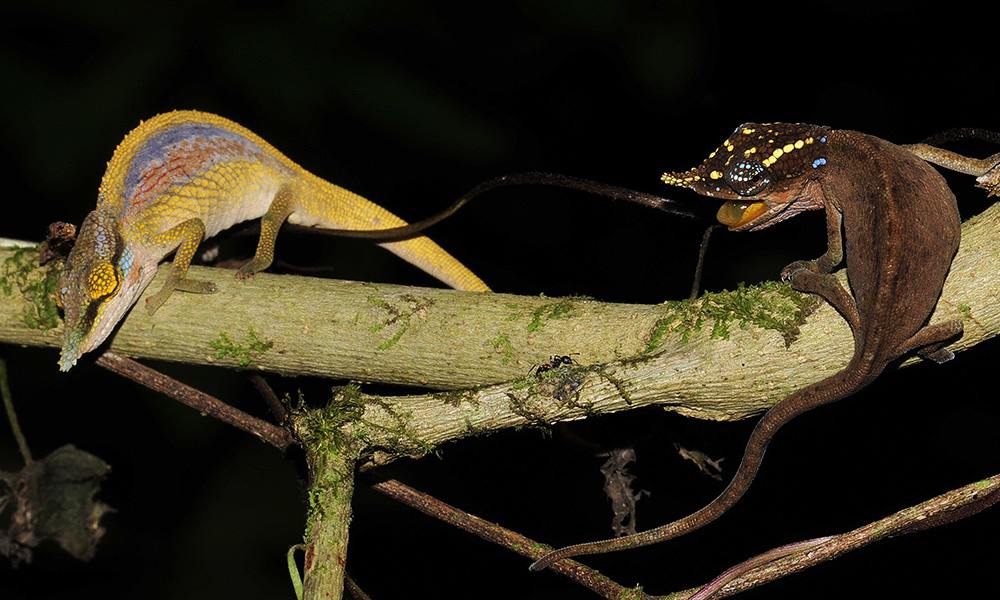
Addressing the biodiversity crisis with 12,000 reptiles – or one database
An EMBL alumnus reflects on the database he started as a graduate student 25 years ago at EMBL

Text and photos by Peter Ütz
When I look back at 1996 and the birth of the EMBL Reptile Database, it feels like the culmination of a few lucky events: the opportunity afforded by the new worldwide web, created in the early ’90s; EMBL’s relatively new (and enthusiastic) database team; and the lack of biological databases in general.
But that was not enough. As a predoc in Rolf Zeller’s group (which studied limb development), I initially thought of starting a database on gene expression patterns, but that was met with little enthusiasm – for good reasons: there was simply not a whole lot of data for a robust database.
After considering a database of protein–protein interactions, I ultimately resorted to an old childhood interest that was indirectly related to my thesis work: reptile taxonomy (the connection to gene expression being the genes involved in limb loss in the evolution of snakes and limbless lizards).
I was not aware of another taxonomic database, so this seemed like a project without much competition. Thure Etzold, on the database team, was very supportive and simply said, “Just give me a floppy disk with the data, and we’ll put it online,” when I asked him what I had to do. (Yes, people still used floppy disks back then!) A few months later, the EMBL Reptile Database was live – online and even linked to the DNA sequence database, and it was probably one of the first taxonomic databases on the web.

Why a reptile database is useful
As biologists, we want to know what organisms are out there, how things are related, and how they fit into the big picture of life on earth – ranging from molecules to ecosystems. So, we organise that data.
Luckily, while I was establishing the Reptile Database, Frank Bisby in the UK started the Catalogue of Life, a centralised database of all species on earth. He soon invited me to take care of the reptile portion of the Catalogue of Life, which was then one of several dozen global species databases.
Today, more than 150 global species databases have accumulated 2 million species (including 12,000 reptiles), and they are increasingly interconnected with many other databases such as natural history collections, image repositories, media databases, and, of course, DNA and other molecular inventories.
Millions of people have joined these efforts in citizen science projects such as iNaturalist, which is a user-friendly app for cell phones. The Reptile Database provides the taxonomic backbone for many of these resources, ranging from the US National Center for Biotechnology Information (which maintains GenBank, among other databases) to iNaturalist.
Why you should care
The biodiversity crisis is real. Taxonomic databases record tens of thousands of new(!) species every year, and much of this inflation is because we increasingly understand genetic diversity. At the same time, the human population increases by 80 million people per year – equal to the population of Germany. The bottom line is human encroachment on nature continues unabated.
We need to document and understand biodiversity as well as conserve it. It’s not enough to do the science – we have to fight habitat destruction, deforestation, overpopulation, overconsumption, and bad policies, all of which threaten biodiversity on earth.


